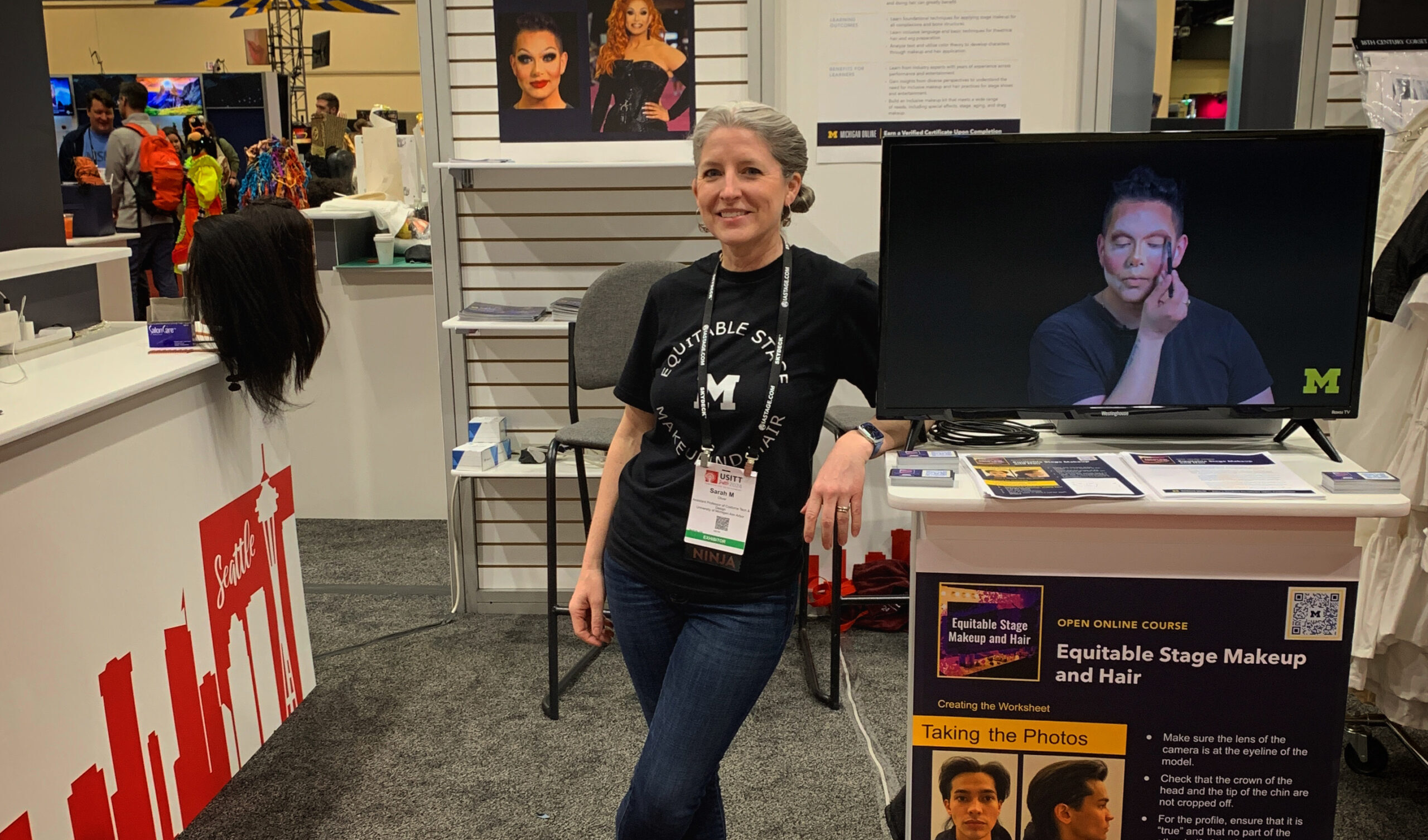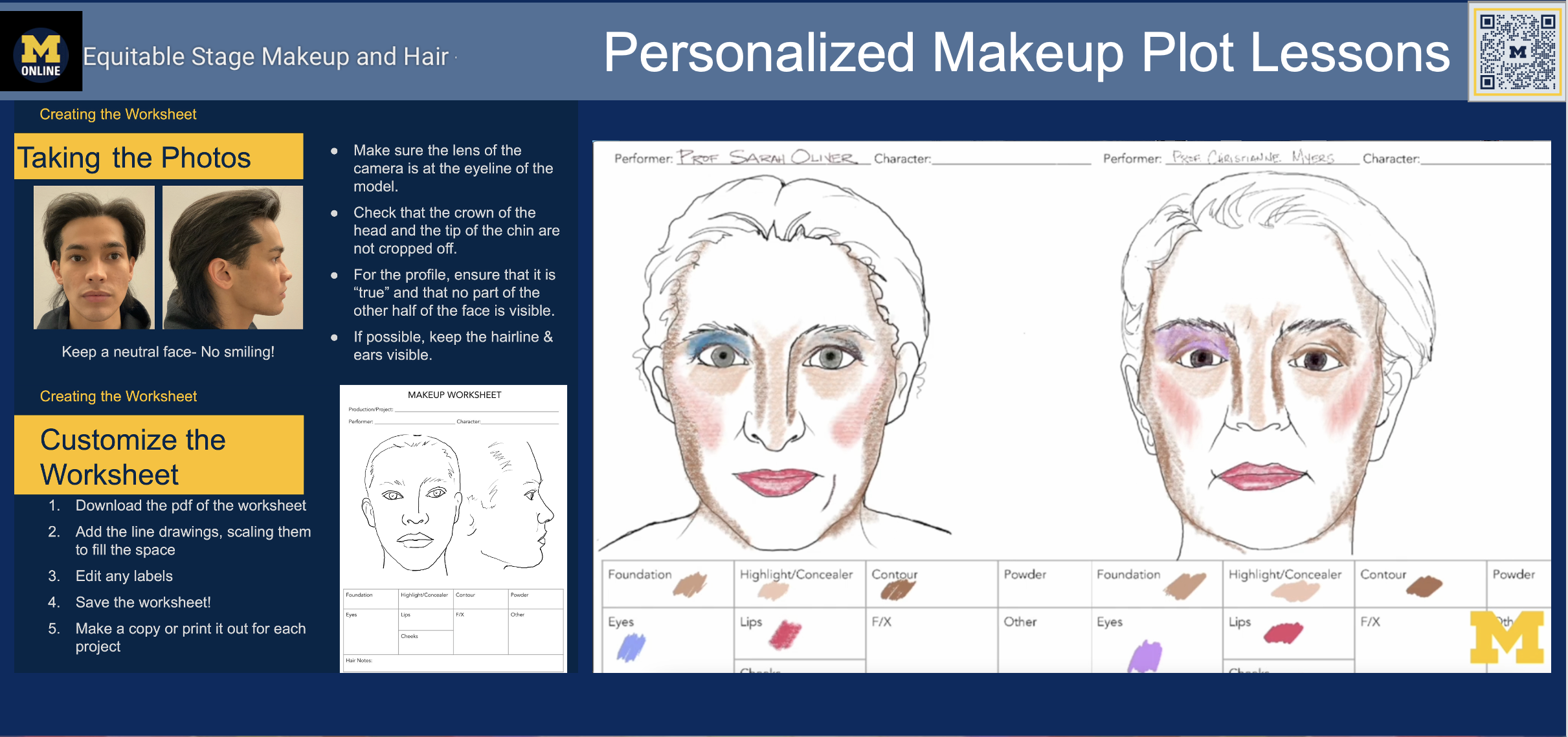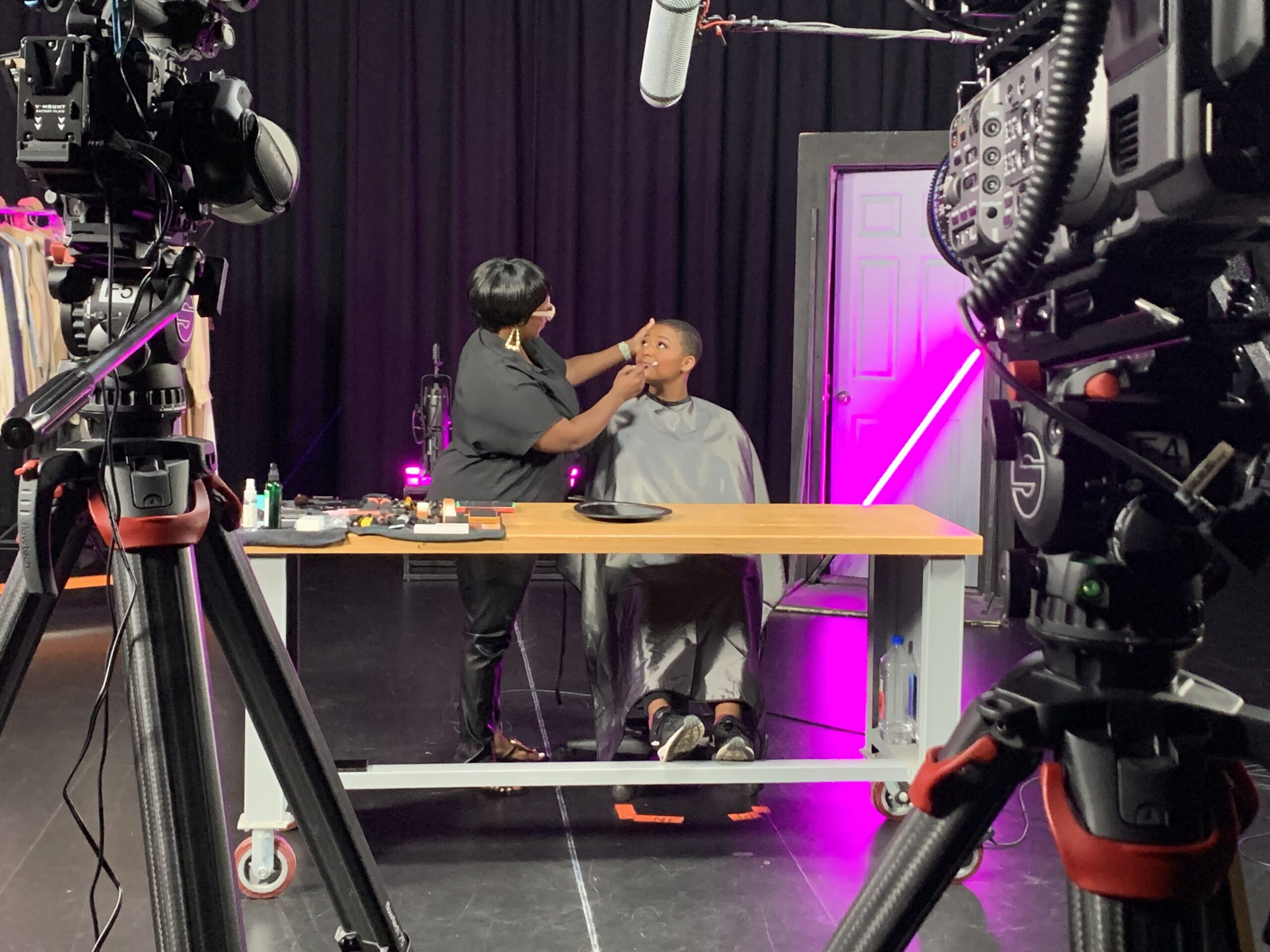They’re unlikely friends, skull anatomy and glitter theory.
In a new-to-the-internet hair and makeup class, the two have come together via the University of Michigan.
Free and accessible to anyone with decent Wi-Fi, the goal is simple:
“That no matter who is sitting in the chair, that the person who is applying the makeup understands how to work with whatever skin tone is in front of them, and they understand how to work with whatever hair texture is in front of them,” says Sarah Oliver, the U Michigan professor who created this Equitable Stage Makeup and Hair course.
From 8 Chairs to Hundreds
Oliver, who teaches costume technology and design, knew she needed to broaden her students’ understanding of on-stage presentation.
There are over 250 performers at the school at any given time—from opera and dance to musical theater.
The catch? They can’t all fit in an eight-seat makeup room backstage. So the idea was born: Film demo videos and put them online.
In a matter of months since its March 2024 launch, over 1,800 people have taken the course, which includes lessons in aging, special effects, hair, and drag. Special guests collaborated (read: TV star Alexis Michelle) to bring expertise to the table.

That expertise, colleague Christianne Myers says, has too long rested on the shoulders of performers themselves.
“For us, [this course] really was about hair and makeup and meeting performers’ needs,” says the University of Michigan costume designer. “Particularly Black performers have so often been called upon to be the experts of their own hair in a really specific way in regional theaters.”
In addition to equity concerns, having unnatural makeup or hair takes viewers out of the show, as does a performer who isn’t their best self on stage.
“Maybe your performance is suffering because you’ve haven’t had as long a break because you had to go and do your own hair instead of knowing you were going to hair appointments that everybody else did, or that someone doesn’t understand the hair texture that you have and they don’t have the proper wig for you,” Oliver says.
“You don’t even realize that those performers are wearing a wig except for you because you have a wig that clearly doesn’t work for your hair texture or your skin tone,” she adds.
Accessible Across Stages
The Coursera modules are truly for anyone, performers and instructors alike.
People having makeup done in these instructional videos have a range of skin tones; ages across the spectrum are represented.
“Inclusivity is sort of baked into all the teaching modalities,” Myers says.

The videos, three years in the making, are high-quality and broken into sections—you don’t need to take them all. Click, watch, learn.
Then, take your whole self, and go perform.
